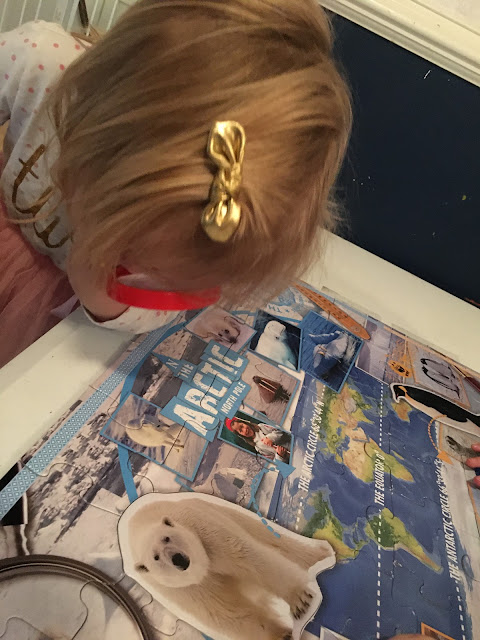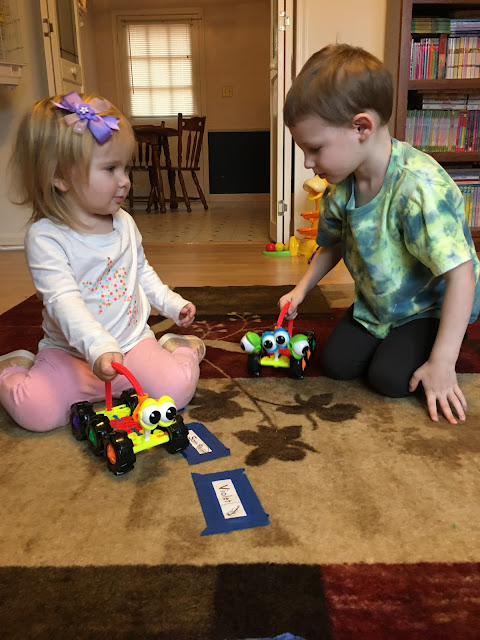Monday, January 27, 2020
Polar Habitats
Polar habitats... brr! The name just sounds cold! Today we started learning a bit more about Antarctica, where the south pole is located.
We used penguins, snowflakes, "snowballs" and tubes in the Explore Table.
We also put together this floor puzzle of the animals that live in the polar regions of the world. After completing the puzzle, we used our magnifying glasses to find different animals. Even though both poles have ice and snow, penguins are only found in Southern continents, and polar bears are only found in Northern ones.
Some animals, like whales or terns, migrate between the two poles.
It's fascinating stuff to learn about these places in the world that have the LONGEST winter ever!
Thursday, January 16, 2020
Why is it Winter? SPACE holds the answer!
In following Friend "Sandwich's" zest for Space learning, we built a unit all about space! And we connected it with our prior unit about winter. Winter on Earth looks cold and bare. Trees are sleeping and their leaves have fallen, sometimes it snows, and we have to wear extra clothes to keep warm. Winter in space looks like Earth tilting, or leaning, away from the Sun's warmth.
We have worked in our Explore table (pictured above) to learn names of planets, "catch stars," and taking samples of space rocks with "rovers."
We built, and rebuilt, our own rovers. Their job is to take pictures, rock samples, and other information while exploring the moon or Mars. We read about rovers in a book, and then used our imaginations to take ours on space expeditions.

At the Alone Table, we used stars to make pictures, or constellations. We also had a Galaxy bottle to shake up and watch the shooting stars.
This bottle is 1/2 mineral oil, purple and blue glitter, and 1/2 water with blue and red dye. Shake it up and watch the magic happen!
Space is art-mazing! We used foil, star stickers, and glue to make these space pictures. Our dialogue went beyond the practical process of the art (peeling stickers, squeezing glue, ripping or crunching foil): we discussed nebulae where stars are born, asteroids "the space rocks," and constellations.
Astronomy is such a vast topic, and there is so much to do with preschoolers on the subject! Winter is a perfect time to study space.
Friday, January 3, 2020
Happy New Year! We're Back!
We are kicking off the Spring 2020 semester right! Our new explore table is filled with rice, pom poms, glitter balls, scissor catchers, and scoops!

We've been exploring cars, ramps, roads, and races too!

And our Alone Table work is fascinating on the light box! Each child had fun building with the transparent legos, "snowballs," and animal figurines. Winter is such a fun time of year at Harmony's House! Welcome back friends. :)
Subscribe to:
Comments (Atom)
What's with the "Names?"
For new readers of the blog, this post is an explanation of the "names" Ms. Harmony uses when she writes about the school happe...

Read More!
-
For new readers of the blog, this post is an explanation of the "names" Ms. Harmony uses when she writes about the school happe...
-
Today we did an art project for Small Group that we couldn't do alone! We needed friends to make this possible, and we had to commun...
-
The Hutson family had to wait about 9 years to have Baby "K" join our family in 2017. That being ...



























